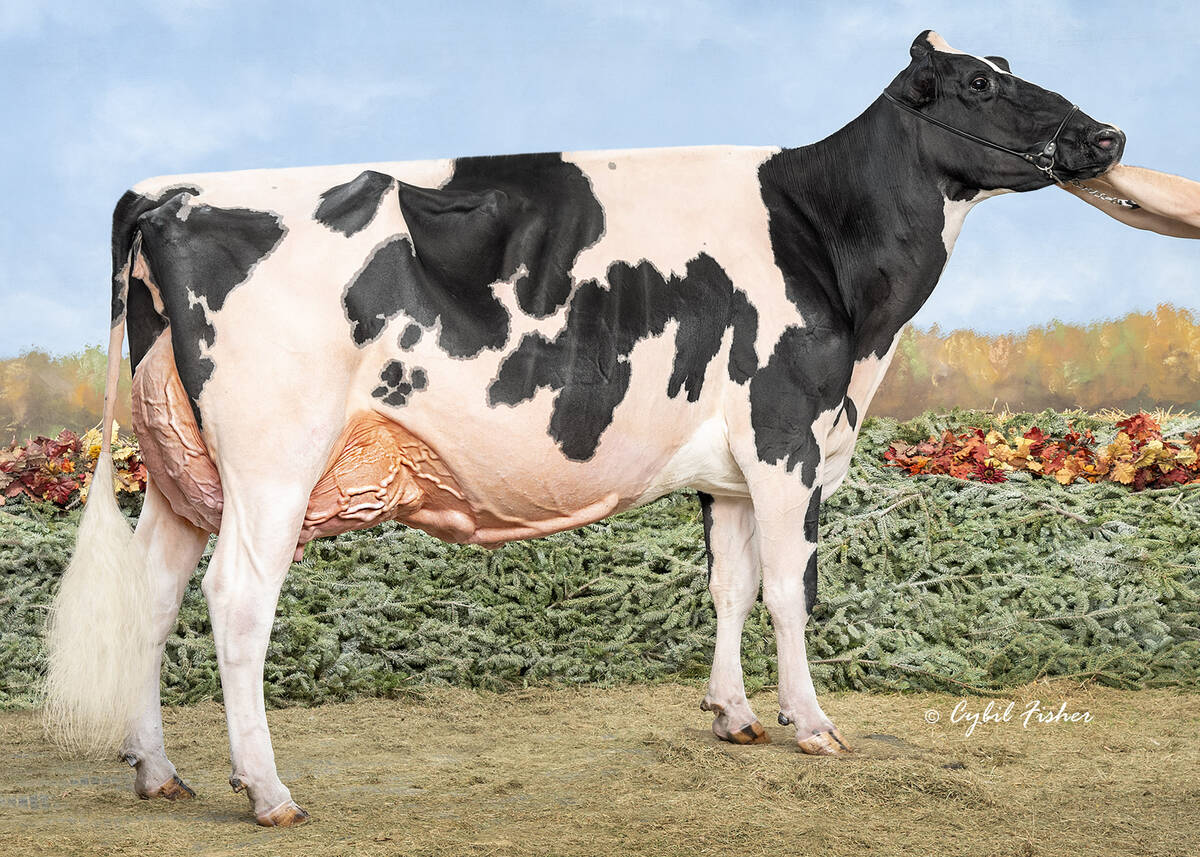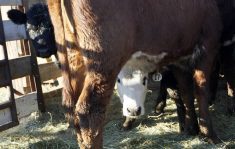RED DEER – Long-term studies at three prairie research farms show
organic production is challenged by weeds, erosion and fertility
management.
“The good news is you can fix all this,” said agronomy professor Martin
Entz of the University of Manitoba during a recent organic farming
conference held in Red Deer. More than 300 people attended the two-day
event.
Manitoba researchers surveyed 14 certified organic farms in Manitoba,
Saskatchewan and North Dakota, using 1,078 field records.
Yields on commercial organic farms were slightly lower compared to
Read Also

Saskatchewan dairy farm breeds international champion
A Saskatchewan bred cow made history at the 2025 World Dairy Expo in Madison, Wisconsin, when she was named grand champion in the five-year-old Holstein class.
conventional agriculture in their areas. However, the premiums paid for
organic production outweighed the lower production.
“From a sustainability standpoint these yields are acceptable to make a
living, given not only the price premiums but the reduced cost of
production,” Entz said.
Getting the most out of this production system was sometimes hampered
by nutrient imbalances.
Soil quality checks found most farms had adequate fertility but some
had a phosphorus deficiency.
“Some of them had great rotations with lots of perennial crops, lots of
soil-building crops. Some had virtually no soil-building crops in the
rotation. That’s a problem,” said Entz.
Weeds like wild mustard, Canada thistle, red root pigweed, green
foxtail and wild oats were also common on these farms.
The university has maintained a 30-acre organic trial at its Glenlea
research farm.
Low, medium and high diversity rotations have been maintained to study
fertility and plant competition against weeds.
The first level uses an annual crop rotation of wheat, peas, wheat and
flax. Wild oats were a problem for this system.
The medium diversity rotation adds biennial sweet clover every fourth
year into the wheat and flax mix. The sweet clover is plowed down for
green manure. It also acts as a cover crop to conserve water and
prevent erosion.
High diversity rotations consist of wheat, two years of alfalfa cut for
hay, followed by flax.
The best crop performance was recorded in cereals following alfalfa.
Entz said livestock should be included in crop rotations. Although
livestock may add to the weed problem by spreading seeds in their
manure, the droppings add much needed phosphorus.
Using perennial forages like alfalfa can also control weeds and
encourage more ground beetles to enter fields. These beetles eat weed
seeds, particularly favouring wild oat and green foxtail.
Another legume under investigation is medic, grown widely in Australia.
A new three-year study at the University of Manitoba will investigate
the benefits of incorporating self-seeding medic into prairie crop
rotations.
Medic reportedly stabilizes soil salinity, reduces excess water
problems, controls volunteer plants and post-harvest weeds and provides
late season grazing.
At the Agriculture Canada research farm at Scott, Sask., a 40-acre
organic research project is part of a study involving high inputs,
reduced tillage and organic production.
Researcher Eric Johnson said weeds varied over time on the organic
plots. Lack of nitrogen was a greater problem in this six-year-old
study.
Mechanical weed control has been tested for the past four years to
develop an effective system for organic crops before and after seeding.
Post seeding tillage with a rod weeder worked well because many weeds
were in the top two centimetres of the soil.
Researchers also tried different types of harrows, which controlled
weeds best as long as the tines were set at 45 degree angles.
The researchers found up to 80 percent of weeds are killed by burial
rather than uprooting. When using harrows or the rod weeder, operators
were careful not to bury the crop as well. Up to 10 percent crop loss
has been experienced with post seeding tillage. This is considered
acceptable.
At the Lethbridge Research Centre, a four-year rotation study is
nearing completion.
Led by soil scientist Jill Clapperton, the program looked at organic,
low inputs and a variety of rotations.
The study was set out on 15 x 30 metre plots so full-sized farm
equipment could be used to mimic farm practices.
Weeds were best managed under diverse rotations that included sweet
clover as a cover crop.
Part of the study aimed to practise no-till organic production.
“We got away with very little tillage, which was good. It’s very likely
we could not do no-tillage,” she said.
“We could demonstrate brilliantly the value of direct seeding.”
The program is to continue another four years.















